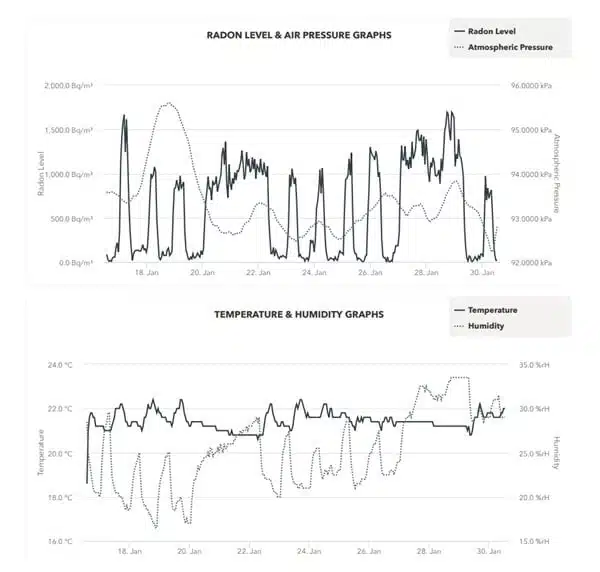Clear the Air: Radon Testing Services by RadonCare
From DIY, to real estate, to commercial spaces – We have you covered!
Radon Testing: Our Top Pick
Simply place and see a digital readout of your levels. Easy to use on your own, with our full support available for any questions.
Looking for more options? Check out our web store.

Breathe Easy in Your Business:
Commercial Radon Testing
RadonCare’s certified team provides expert Radon Testing Services with comprehensive measurement and mitigation strategies for any building. We are licensed and insured and follow a rigorous safety program to ensure top-quality service. Our Radon Testing Services comply with Health Canada, C-NRPP, ASTM, and CGSB standards, ensuring accuracy and reliability. Trust RadonCare to safeguard your business with precise testing, improved air quality, and peace of mind.
Professional Test for Real Estate and Greener Homes Grant
C-NRPP certified short term test (48hr-1 week) with full detailed report and findings. We will also perform a site assessment of the property, providing red flags and mitigation costs if required.

Answers to Your Common Questions
No. Although studies do show certain regions and neighbourhoods have a higher prevalence of radon than others, radon levels can vary widely over short distances and with small variations in building structure. The only way to know if your home is safe is to have it tested.
Health Canada cautions against using the word “safe” when talking about radon – what we can say is that lower levels are best, but even low levels can have some risk. If for example, you smoked 10 cigarettes in your lifetime, it is unlikely you would develop lung cancer – unlikely but not absolutely a zero percent chance. If you smoked a pack a day the risk increases dramatically at which point corrective action (quitting smoking) would be recommended. For this reason, rather than “safe” levels we deal with at what level corrective action should be taken to lower the risk (see next question).
The most widely accepted risk models present a linear correlation between radon exposure and risk. This means there is no level of exposure which is without risk, however, because the gas is found at very low concentrations in natural settings the risk is extremely low. Radon is only a concern when it concentrates to high levels inside of structures such as your home, where in extreme cases it may reach levels thousands of times higher than ambient levels outdoors.
Health Canada recommends testing for a minimum of 90 days to determine your average radon levels. In rare cases, a reliable test completed in a shorter duration (ex. 3-4 weeks) which determines significantly elevated radon levels are present may provide reasonable grounds to conclude the test earlier. A home measuring 1,000bq/m3 for 1 month would still exceed mitigation guidance levels if the radon was reduced completely for two months – an impossibility. The average of the 3-month test would still be ~330Bq/m3, well above all guidelines for mitigation. Please contact us for further guidance.
Health Canada recommends testing for radon every 3-5 years – even if you have a mitigation system. If you’d like to be extra safe, a CRM (Continuous Radon Monitor) can be used to track of radon levels year-round and make note of any unusual patterns.
Usually not very accurate. The problem is not the equipment used to test, even a $230 radon meter can give very accurate readings in 24 hours, the problem is that levels can change dramatically throughout the year due to weather conditions or home usage. Often cold weather can cause an increase of levels – but in some cold weather, houses may also reduce. The same can be said for wind, rain, or any other type of weather.
Short answer – winter. Longer answer – According to Health Canada, tests should be performed in winter months but new research from Evict Radon suggests up to around 30% of houses can have higher levels of radon in the summer months. Official guidance still recommends winter tests but summer is beneficial too which is why many choose to monitor with digital continuous radon monitors (CRM).
Client Stories
Andrew was very personable and knowledgeable when he did our in home quote. (which was free!) The staff who came to install the mitigation system were also professional and polite which is very important for someone working in your house! We’re pleased with the look of the system and according to the short-term test, it worked well! I feel like we received good value for what we paid, especially including the warranty. I definitely recommend Radon Care for anyone who wants to get mitigation done or even just wants information on radon levels and how it affects their health.